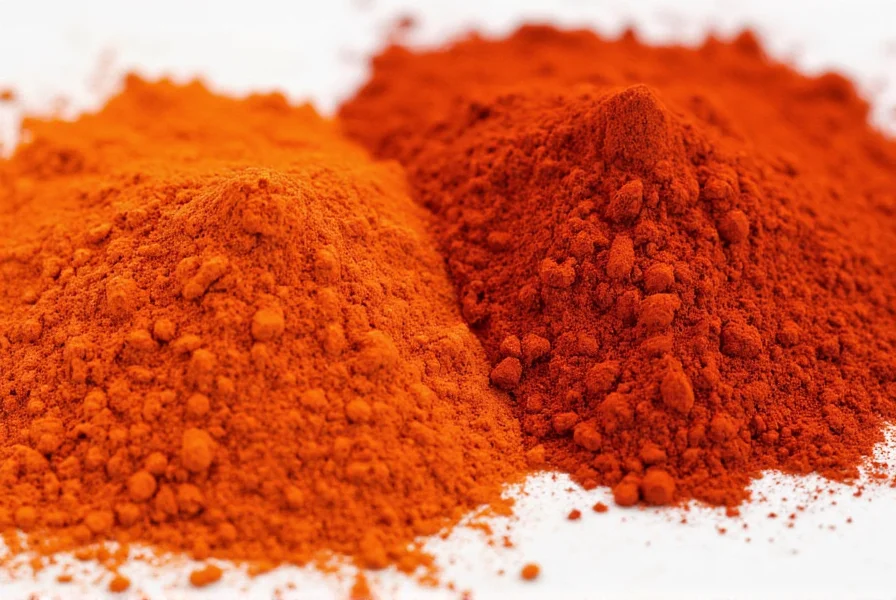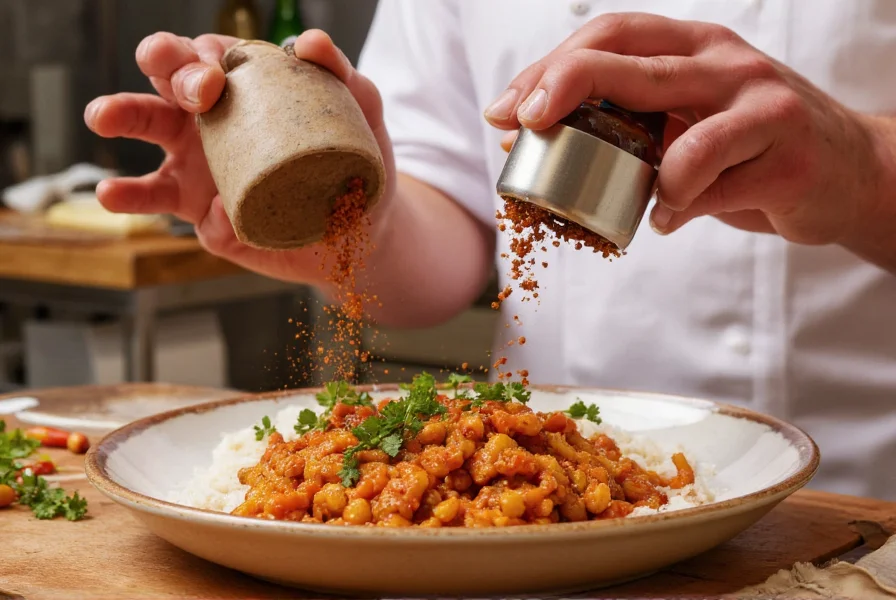Understanding the distinction between paprika and cayenne pepper is essential for precise cooking. Many home chefs mistakenly treat these spices as equivalents, leading to disappointing (or painfully spicy) results. This comprehensive comparison reveals their botanical origins, flavor chemistry, culinary applications, and proper substitution ratios.
Botanical Origins and Production
Both spices derive from Capsicum plants but represent different species and processing methods. Paprika primarily comes from Capsicum annuum varieties including bell peppers and mild chili peppers. Its color ranges from bright red to deep orange depending on the specific cultivar and ripeness at harvest.
Cayenne pepper, by contrast, is made exclusively from Capsicum frutescens or Capsicum chinense varieties. These peppers undergo full ripening to develop their characteristic fiery heat before drying and grinding. The production process significantly impacts their chemical composition—particularly capsaicin content which determines heat intensity.

Heat Level Comparison
The most critical difference lies in their Scoville Heat Units (SHU), the standard measurement for chili pepper heat:
| Spice Type | Scoville Heat Units | Relative Heat |
|---|---|---|
| Sweet Paprika | 0-100 SHU | Mild (similar to bell pepper) |
| Hot Paprika | 500-1,000 SHU | Mild to medium |
| Cayenne Pepper | 30,000-50,000 SHU | Very hot |
This dramatic difference explains why substituting cayenne for paprika without adjustment typically ruins dishes. One teaspoon of cayenne contains as much capsaicin as 30-50 teaspoons of sweet paprika.
Flavor Profiles Beyond Heat
While heat measurement gets the most attention, flavor complexity matters equally in cooking:
- Paprika: Offers earthy, sweet, and sometimes smoky notes. Hungarian varieties often have raisin-like sweetness, while Spanish smoked paprika (pimentón) delivers deep wood-fired complexity
- Cayenne: Primarily delivers sharp, pungent heat with subtle fruity undertones. Lacks the nuanced sweetness of paprika
These flavor differences make them suitable for distinct culinary applications. Paprika enhances color and subtle flavor in dishes like goulash and deviled eggs, while cayenne provides assertive heat in hot sauces and Cajun seasoning.

Nutritional Comparison
Both spices contain beneficial compounds but in different concentrations:
- Vitamin A: Paprika contains significantly more beta-carotene (which converts to vitamin A), giving it vibrant color and antioxidant properties
- Capsaicin: Cayenne contains 30-50 times more capsaicin, the compound responsible for heat and potential metabolic benefits
- Vitamin E: Paprika generally has higher tocopherol content
Culinary Applications Guide
Understanding when to use each spice prevents cooking disasters:
When to Choose Paprika
- Adding color without significant heat (roasted meats, potato salads)
- Creating base flavors in stews and soups (Hungarian goulash)
- Providing smoky notes (Spanish pimentón in paella)
- Finishing dishes where subtle sweetness enhances flavor (deviled eggs)
When to Choose Cayenne
- Adding consistent, assertive heat (hot sauces, buffalo wings)
- Creating spicy rubs for meats
- Boosting heat in small quantities (chili powder blends)
- When recipes specifically call for its distinctive pungency
Substitution Guidelines
While not perfect substitutes, these ratios help when you're missing one spice:
- To replace 1 tsp cayenne: Use 1-2 tbsp hot paprika OR 3-4 tbsp sweet paprika + pinch of red pepper flakes
- To replace 1 tsp sweet paprika: Use ⅛ tsp cayenne + ¾ tsp paprika substitute (like tomato powder)
Always add heat gradually—cayenne's intensity builds slowly, so wait 5-10 minutes before adding more. Remember that paprika's primary role often involves color and subtle flavor rather than heat.
Common Misconceptions
Several myths persist about these spices:
- "All paprika is mild" - Incorrect. Hungarian hot paprika reaches 1,000 SHU, while smoked Spanish varieties vary from sweet to hot
- "Cayenne is just hot paprika" - False. They come from different pepper species with distinct flavor compounds
- "They're interchangeable in equal amounts" - Dangerous assumption that ruins many recipes
Storage and Freshness Tips
Both spices lose potency over time. For optimal flavor:
- Store in airtight containers away from light and heat
- Replace paprika every 6-12 months (it degrades faster than cayenne)
- Test freshness by rubbing a small amount between fingers—if aroma is weak, replace it
- Freeze excess in portioned containers for long-term storage
Understanding the paprika vs cayenne pepper distinction transforms your cooking precision. Recognizing their unique properties allows you to harness each spice's strengths rather than treating them as generic "red powders." Whether crafting a delicate Hungarian stew or fiery buffalo sauce, selecting the right spice makes all the difference.
Frequently Asked Questions
Can I substitute paprika for cayenne in chili?
Yes, but with significant adjustments. Replace ¼ tsp cayenne with 1½-2 tbsp hot paprika. For sweet paprika, use 3-4 tbsp plus a pinch of red pepper flakes. Remember paprika provides color and subtle flavor while cayenne delivers heat—your chili will be milder but still flavorful.
Why does paprika come in different colors?
Paprika color varies based on pepper ripeness and variety. Bright red indicates fully ripe peppers with higher sugar content. Darker orange or brown hues suggest smoked varieties (pimentón). The color directly correlates with flavor intensity and sweetness—darker doesn't necessarily mean hotter.
Which is healthier, paprika or cayenne?
Both offer health benefits but with different strengths. Paprika contains more vitamin A and antioxidants from its higher carotenoid content. Cayenne provides more capsaicin, which may boost metabolism and reduce inflammation. For overall nutritional diversity, having both in your pantry is ideal.
Does cayenne pepper expire faster than paprika?
Actually, paprika loses potency faster due to its higher oil content and carotenoids that degrade with light exposure. Properly stored cayenne maintains heat intensity for 1-2 years, while paprika's flavor and color fade within 6-12 months. Always store both in opaque, airtight containers away from heat sources.











 浙公网安备
33010002000092号
浙公网安备
33010002000092号 浙B2-20120091-4
浙B2-20120091-4